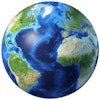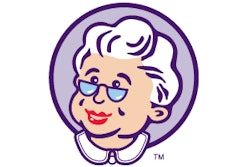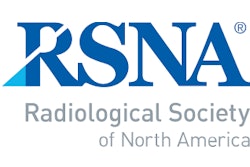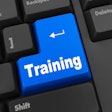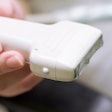Are you reading this story or just skimming? We thought so. You see, oxygen in the blood flowing to certain parts of your brain can now be measured with near infrared imaging (NIRI) and spectroscopy, a technique that may soon allow researchers to objectively measure your cognitive effort and achievement.
Biomedical researcher Dr. Britton Chance of University City Science Center in Philadelphia will talk about developments in NIRI at the plenary session of Medical Imaging 2000, Feb. 12-17 in San Diego. The meeting is one of several radiology conferences in February that are guaranteed to deliver a cognitive workout.
Sponsored by the International Society for Optical Engineering (SPIE), Medical Imaging 2000 is billed as the century's first major scientific and technical meeting on developments in medical imaging. It will feature presentations on the latest research in imaging physics, visualization and transmission of images, computer-aided diagnosis, ultrasonic imaging and signal processing, and PACS design and evaluation, to name just a few. In-depth workshops will accompany each presentation, and a series of short courses will offer technical information on topics from texture and contrast analysis to 3-D imaging techniques.
Conference co-chair Dr. Eliot Siegel of the Baltimore VA Medical Center and the University of Maryland said highlights will include a keynote address by PACS expert Dr. Sam Dwyer on the history of PACS, followed by a discussion of PACS in Europe and a panel discussion on improving the technology. Siegel said the Mallinckrodt Institute of Radiology's Dr. Gilbert Jost will provide a status report on the RSNA/HIMSS Integrating the Healthcare Enterprise (IHE) effort. He said the annual meeting always attracts an interesting mix of developers, scientists and radiologists interested in cutting-edge technologies.
"This is one meeting where I can sit down with the engineers and say, 'Hey, I've got an interesting idea for image compression, or processing, or imaging navigation -- what do you guys think about it?'" Siegel said. "It's an interesting opportunity for physicists or radiologists or people who might not know very much about medical imaging to interact with developers in a way that they really wouldn't be able to at RSNA or SPIE or SCAR." More information is available at http://www.spie.org/info/mi.
Get a backbone
The third annual Symposium of the American Society of Spine Radiology happens this month as well, from February 21-23 in balmy Marco Island, FL. The symposium, entitled Practical Spine Imaging and Imaging Guided Therapy, is designed to provide a broad overview of modern spine imaging and intervention from a practice perspective.
The three-day meeting will focus on a different area of study each day. Day one will feature sessions on spinal infection and inflammation, spinal trauma, and the posterior spine as a source of pain in the back and lower extremities. Dr. Barth Green, chairman of neurological surgery at the University of Miami School of Medicine, will give a talk on new treatments for spinal cord injuries.
Day two is devoted to spine intervention, and includes presentations on three new techniques -- vertebroplasty, kyphoplasty and pipoplasty -- all minimally invasive percutanaceous procedures that are gaining acceptance in the U.S. for treating compression fractures of the lumbar and thoracic spine. Day three will include sessions on peripheral neuropathy, myelopathy and spinal tumors, as well as congenital spine anomalies and the pediatric spine.
Conference director Dr. M. Judith Post, chief of neuroradiology at the University of Miami School of Medicine in Miami, said the demonstration workshops are an excellent forum for highlighting new interventional techniques that are gaining a foothold in practice.
"There's been an increase in interest in neurological spine intervention, with more biopsies and discectomies and discography and facet injections," Post said. "Particularly, vertebroplasty is of great interest to a lot of people. The other areas of interest are on spinal infection, how to drain abscesses, etc. The speakers are excellent, so I look forward to all of them being terrific."
Information on the ASSR conference, and online registration, are available at www.ryalsmeet.com.
ASITN meeting
Coming up February 6-9 in New Orleans is the joint meeting of the AANS/CNS Section on Cerebrovascular Surgery and the American Society of Interventional and Therapeutic Neuroradiology (ASITN).
Conference co-chair and ASITN president-elect Dr. Thomas Tomsick of University Hospital of Cincinnati, OH, said the combined meeting of neurosurgeons and interventional neuroradiologists was a natural result of new procedures that cross the increasingly fuzzy boundaries between the two disciplines.
"There are disease processes that can be treated by one of two techniques, perhaps," Tomsick said. "One might be the historical direct surgical technique, and there might also be an endovascular technique. It's about doing the best thing for the patient, and we want to share knowledge in this regard. So there's a bit of cross-fertilization here. Interventional radiologists seldom do a lot of general radiology. They identify themselves more with neuroscientists."
The four-day conference will include symposia on arteriovenous malformations, aneurysms, subarachnoid hemorrhage and cerebral ischemia. A talk on cerebral revascularization for ischemia by Dr. John Perl will highlight Wednesday's discussion of stroke treatment, according to Tomsick. For more information or to register online, visit www.neurosurgery.org/sections/cerebrov/summary.html.
Other highlights include an expert debate on the management of unruptured aneurysms, and one on alternative treatment options for cartoid stenosis: stenting vs. carotid endarterectomy.
"They're going to talk about the treatment of carotid artery disease, balloons and stents in the arteries, and there will be a number of papers addressing that issue," Tomsick said. "The classic treatment for a narrow or blocked carotid artery has been surgery. Well, maybe some of these interventional techniques are competitive. Only when we do a scientific analysis will we really know." (Tomsick said there are plans to do just that, in a planned nationwide trial called the Crest Trial for Treatment of Carotid Artery Stenosis.)
"Neurointerventionalists like myself work hand-in-hand with neurosurgical teams," Tomsick said. "I've worked with my neurosurgeon for 22 years, and we attempt to bring the best treatment to every patient. And it's not competitive treatment; we're committed to quality performance, quality training and quality in the future."
By Eric Barnes
AuntMinnie.com staff writer
February 2, 2000
Copyright © 2000 AuntMinnie.com

